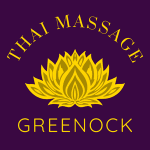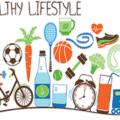Thai Massage tutorials and tips.
This article was provided by Mark’s Daily Apple, which is the go-to destination to learn how to lead a healthy Primal life in this hectic modern world. I find their posts usually offer some interesting opinions and useful trips and advice
 For today’s edition of Dear Mark, I’m answering questions from last week’s Collagen vs Whey post. You guys had a lot of questions, mostly about collagen, and I’m here to answer them. Can collagen help with plantar fasciitis? Should you take collagen and whey together in the same smoothie, or do they cancel each other out? If a person can’t have whey, is there an equivalent protein powder source? Is glycine a good replacement for collagen? What about liquid whey from raw milk—how does it compare to powdered whey? If I wanted to get my glycine from foods, what would I need to eat and how much of it?
For today’s edition of Dear Mark, I’m answering questions from last week’s Collagen vs Whey post. You guys had a lot of questions, mostly about collagen, and I’m here to answer them. Can collagen help with plantar fasciitis? Should you take collagen and whey together in the same smoothie, or do they cancel each other out? If a person can’t have whey, is there an equivalent protein powder source? Is glycine a good replacement for collagen? What about liquid whey from raw milk—how does it compare to powdered whey? If I wanted to get my glycine from foods, what would I need to eat and how much of it?
Let’s find out:
Is there any evidence that collagen supplements can help with plantar fasciitis? Suffering from this recently and the stretching from MDA has helped but looking to get that last 10% of healing so there is no pain.
Fascia is basically pure collagen. If collagen supplementation has been shown to improve pain in other parts of the body made of collagen, like the knees or tendons, and improve collagen synthesis in collagenous tissues like skin and joints, I see no reason it shouldn’t also improve the fascia. Boosting collagen synthesis is boosting collagen synthesis, and supplemental collagen does it.
A good thing to try is eat 20-30 grams of collagen with 200 mg of vitamin C 30 minutes before a workout that you know targets your plantar fascia.
Hey Mark,
Is there any benefit to having them at the same time? Or do they cancel each other out?
I’m a big fan of stirring collagen into any foods I make that have sauce.
What about a 50/50 smoothie of whey and collagen?
Thanks for any insight!
I’m unaware of any unique benefit.
When you think about how collagen appears in the natural world, it’s usually alongside muscle meat.
Entire culinary traditions revolve around the consumption of collagen and muscle meat together. Think Vietnamese pho (bone broth and meat). Think French (reduced broth-based sauce poured over meat). Think Mexican (bone broth-infused rice served with meat). Hell, go all the way back to the Pleistocene and humans were boiling smashed bone fragments in stomach casings.
No reason to separate them.
It is possible for a person to be allergic to casein and I don’t think it’s possible to have fully casein free whey protein except maybe the isolate. However, if the person is allergic it wouldn’t be safe. What’s the next best complete protein if a person can’t use whey, and wants the convenience of a powder? I’ve seen beef protein before, but have no idea of the quality.
I’d say go for egg white protein. Extremely complete, tasteless, and blends seamlessly into anything.
Is it true that collagen doesn’t work/assimilate without vitamin C? I try to take mine with some cherries or lemons.
It seems to work better. The recent study that found pre-workout collagen improved tendons also included vitamin C.
I sometimes buy raw A2 milk from Jersey cows, and make my own whey. Wondering how that compares to powdered whey?
That’s awesome. The liquid whey will have a broader range of nutrients, but the powdered whey will be more concentrated and far higher in protein. Remember that whey protein is basically dehydrated liquid whey and you’ll get a picture of how much liquid whey goes into whey powder.
My interest in this has led me to start studying biology because I would like to know more about nutrition and digestion. Because the way that my nails changed seems incredible to me and it really makes me wonder what else collagen is doing.
You make a good point. I often use improvements in one area of health as assurance that other areas of health are also improving. I’m sure that’s not always true, but I think that’s a pretty safe assumption most of the time.
My question to you Mark would be to echo the same question others have posed, ie are there any downsides to me taking whey, collagen and glycine simultaneously in my pre-workout shake? Otherwise I have a real dilemma, as it appears that there is very good science to support having both collagen/ glycine as well as rapidly digested essential aminos (from whey) in your system before undertaking a ‘fasted’ workout.. A tough question I know but any insight you have would be much appreciated!
There’s no reason to avoid it. Do it. Should be good for both your connective tissue and your gains.
Would glycine supplements have a similar effect as collagen? Glycine supplementation would be way less expensive than collagen:
• 30 grams of collagen (=~10 grams glycine) from Great Lakes = 5 tablespoons, costs =~$1.13 if you buy the 8 pound bag.
• 10 grams of glycine from Bulk Supplements =~$0.18 if you buy the 5 kilogram bag.
Pure glycine is great for things like balancing your intake of methionine. As I wrote in the original post, muscle meat is high in an amino acid called methionine. Methionine metabolism depletes glycine, so the more meat you eat, the more glycine-rich connective tissue, bone broth, and collagen supplements you should be eating to balance out the amino acids. This is the basic foundation for eating all that collagen I recommend.
But balancing methionine for longevity and health isn’t the only reason we’re eating collagen. Collagen is the most abundant protein in the body, providing tensile strength to our bones, teeth, ligaments, tendons, and cartilage. It’s an important structural component of the skin, lungs, intestines, and heart. And as far as the evidence so far available suggests, eating the amino acids that make up collagen separately doesn’t have the same effect on those collagenous tissues as eating them together in a collagenous matrix.
In one study, rats with osteoporosis ate collagen hydrolysate that scientists had marked with a radioactive signature to allow them to track its course through the body. It survived the digestive tract intact, made it into the blood, and accumulated in the kidneys. By day 14, the rats’ thigh bones had gotten stronger and denser with more organic matter and less water content.
Another study found similar results, this time for cartilage of the knee. Mice who ate radioactive collagen hydrolysate showed increased radioactivity in the knee joint.
When you feed people collagen derived from pork skin, chicken feet, and cartilage, many different collagenous peptides appear in the blood. You don’t get any of those from isolated glycine.
All that said, pure glycine can be a helpful supplement. As mentioned, it’s great for balancing out methionine intake from muscle meat consumption. It’s also been used in several studies to improve multiple markers of sleep quality. And glycine is probably the most important component, if you had to choose just one, of collagen.
Collagen is ideal, but glycine isn’t a bad option. In fact, I’d argue that perhaps collagen plus supplementary glycine could offer the best bang for your buck.
Mark, can you please do a post examining the different amounts of glycine in actual foods, i.e. pork rinds, chicken skin, connective tissue rich cuts of meats, etc? I’d really like to get my collagen and glycine from food sources and know how much of the foods I would have to eat in order to get the 10g you mention.
I’ll do a quick answer.
An ounce of pork rinds gives you 3.38 grams of glycine.
An ounce of roasted chicken skin gives you 1 gram of glycine.
A pork tail of about 4 ounces will give you almost 3 grams of glycine. Oxtail should be about the same.
So getting your glycine from food alone is entirely doable, but you’ll probably have an easier time if you like chicharrones/pork rinds and animal tails. There are some higher quality pork rinds out there these days, like the Epic brand ones.
Hi Mark – thank you for all of your great information!!!
I make homemade Greek yogurt at home – I strain it in a fine mesh strainer and get an incredible about if whey as a result. I generally mix about 1/4 cup back into the yogurt to get the right consistency. I throw the rest out. Is this consumable as whey for the diet?
It is consumable. But keep in mind that liquid whey isn’t as protein-dense as whey powder. It’s still good to eat and a great source of probiotics.
Thanks for your questions, everyone. Take care!
References:
Figueres juher T, Basés pérez E. [An overview of the beneficial effects of hydrolysed collagen intake on joint and bone health and on skin ageing]. Nutr Hosp. 2015;32 Suppl 1:62-6.
Shaw G, Lee-barthel A, Ross ML, Wang B, Baar K. Vitamin C-enriched gelatin supplementation before intermittent activity augments collagen synthesis. Am J Clin Nutr. 2017;105(1):136-143.
The post Dear Mark: Collagen vs Whey Follow-Up appeared first on Mark’s Daily Apple.
I hope that you found the above article interesting. You can find similar content on our blog: https://thaimassagegreenock.co.uk/blog/
Please let me have your feedback below in the comments section.
Thai Massage Newsletter
To make sure you don’t miss out on any new posts or promotions that we introduce, sign up for our newsletter.
Once a month we run a special promotion for our newsletter members, so sign up now to make sure you don’t miss out.
It’s free and full of great health and nutrition tips and advice on how we can help you achieve your health and fitness goals.
Let us know what topics we should cover in future.






